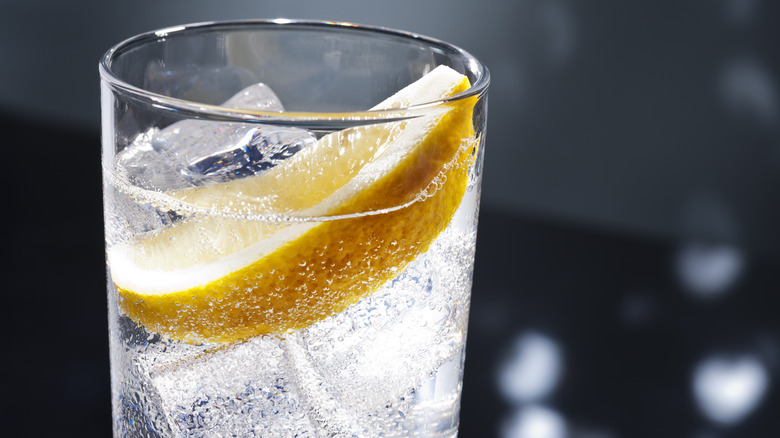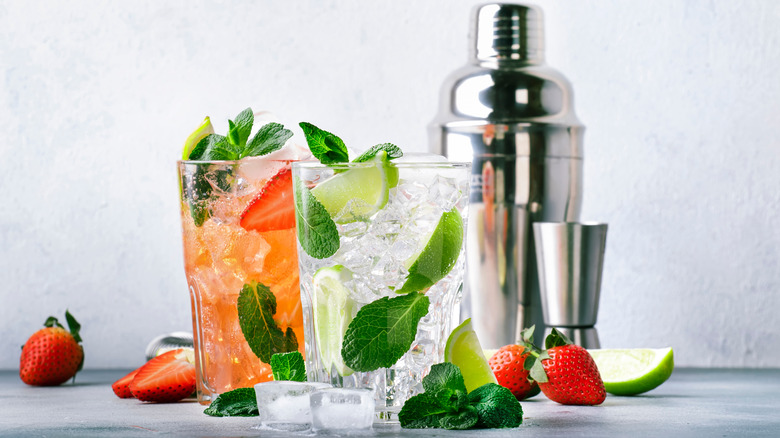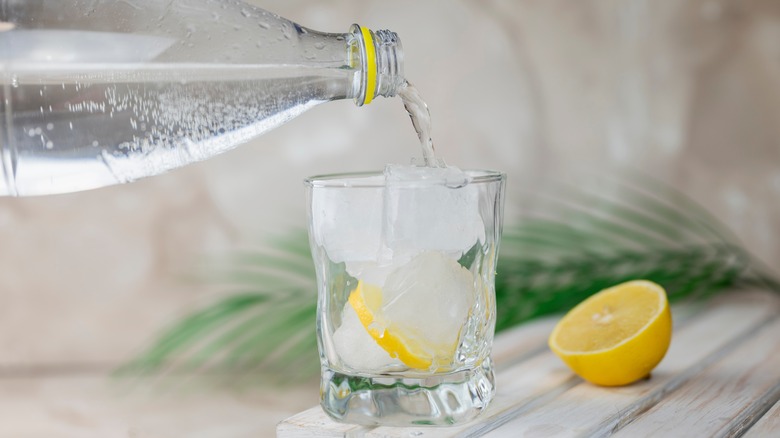The Nutritional Difference Between Tonic Water And Club Soda
Club soda and tonic water are popular behind-the-bar mixers. By the looks of them, not even the keenest eye on earth could tell which one is coming out of the tap. They're both clear with a fizzy head, and dancing bubbles. Take a sip, however, and there's no denying the drastic difference in taste between the two. Club soda tastes very similar to sparkling water, whereas tonic water tastes more like, well, what can really only be described as tonic water.
To make water carbonated, carbon dioxide gas is added under pressure to produce bubbles, per GoodRx Health. Both club soda and tonic water are carbonated water (also known as seltzer) with extra ingredients that level them up from that simple form. These additions affect their taste as well as their nutritional value. Whether your libation of choice is a vodka soda, Tom Collins, Porto Tonico, or gin and tonic, there are some marked nutritional differences between the two.
Minerals make club soda
What sets club soda apart from carbonated water is solely the addition of minerals. Carbonated water can also be found naturally in springs, known as sparkling mineral water such as Pellegrino and Perrier. Club soda is man-made — carbon dioxide is added for bubbles, and minerals are added for taste. The addition of minerals also offers a slightly salty, earthy flavor, per Liquor.
From a nutritional standpoint, the only difference between the bubbly beverage and a glass of water is that mineral content — 74 milligrams of sodium, 18 milligrams of calcium, 7 milligrams of potassium, and 3.5 milligrams of magnesium per twelve ounces, or one can. Club soda has zero grams of sugar and no calories (via USDA).
Club soda is used in many of the most popular mixed drinks. When you order a "soda water," it's a gamble for what you may get. What's poured is in the hands of the bartender's interpretation. If you're looking to avoid or cut back on sodium, specify seltzer water — it's a pretty seamless substitute taste-wise without the salt.
A tonic for malaria
Quinine is the distinguishing ingredient that gives tonic water its unique, bitter flavor, per McGill. It was originally used to treat malaria, per Brittanica. Quinine is made from the bark of a tree and has been touted for its anti-malarial properties extending back hundreds of years. There are more effective treatments for malaria used today, however, you still get a tiny taste of quinine every time you order a gin and tonic.
Without the addition of quinine, tonic water would taste a lot more like club soda. It does not impact the nutrition of the drink, however. What sets tonic apart from club soda in nutritional numbers is the addition of sugar, to offset the bitterness, with some popular brands opting for high fructose corn syrup as the source (via Schweppes).
Twelve ounces of tonic water, which is about one can or bottle, contains 32 grams of sugar, per the USDA, and 124 calories. That's well over the recommended daily amount of sugar by the American Heart Association for women and just about at the limit for men. So a gin and tonic or two at happy hour maxes out your sugar intake for the day. Much like club soda, sodium is also added to tonic water, but in much lesser amounts with 44 grams in 12 ounces compared to club soda's 74.
Based on looks, tonic water and soda water are basically indistinguishable, but when you consider these nutritional details, you'll find they're actually quite different.


